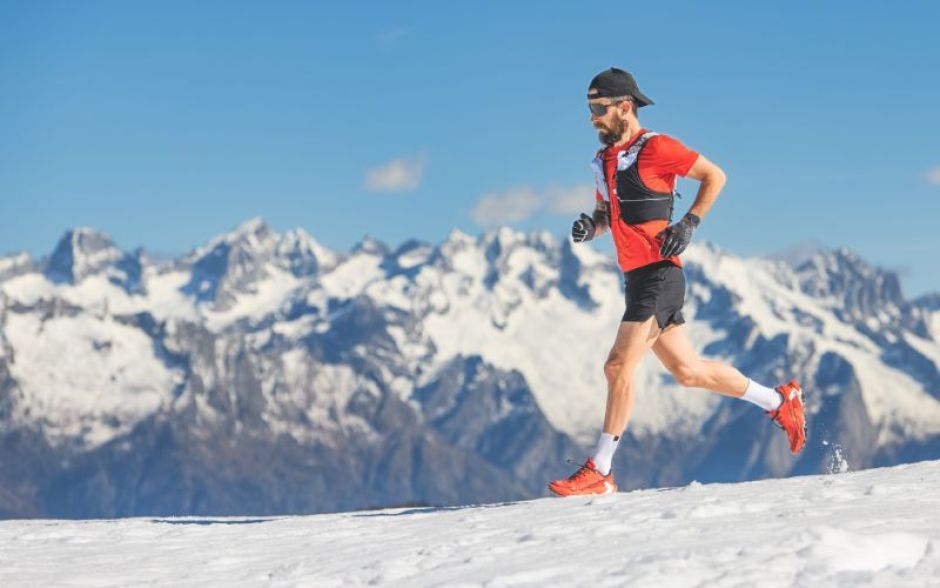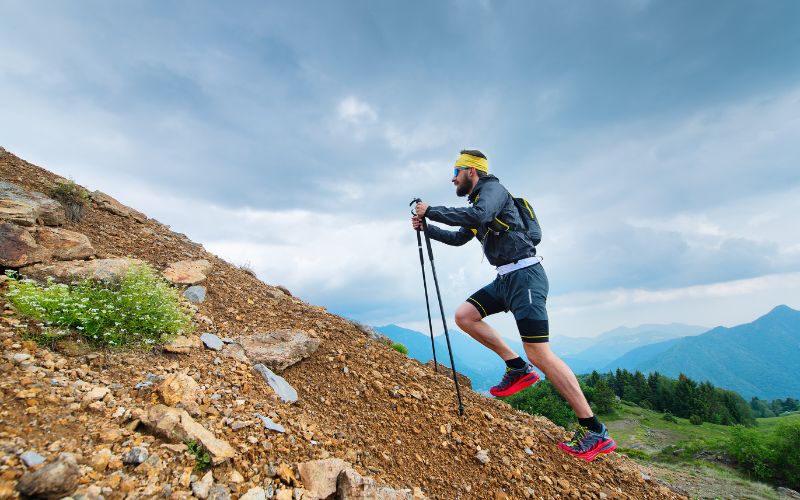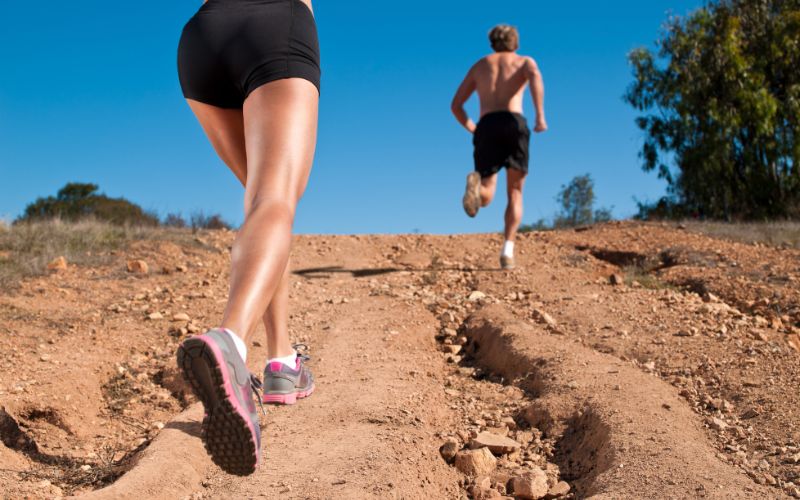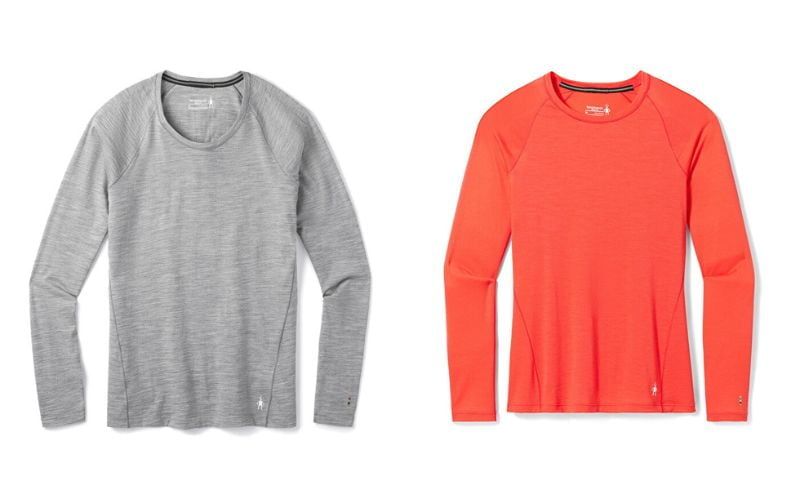
Trail Running Shoes : The Super Footwear Revolutionizing Off-Road Runs 2023
Trail Running Shoes – The evolution of outdoor adventures has gifted athletes with specialized equipment tailored for optimum performance, and nowhere is this more evident than in the development of trail running shoes. These aren’t just ordinary running shoes; they’re a fusion of technology, innovation, and understanding of terrains, designed to handle the unpredictability of trails while providing support, protection, and unparalleled grip. This in-depth analysis delves into the intricacies of trail running shoes, underscoring their importance and guiding you in making informed decisions.
Table of Contents
Trail Running Shoes vs. Regular Running Shoes: The Distinction
At first glance, trail running shoes might seem akin to their road-running counterparts. However, beneath the surface, several core differences set them apart.
- Outsole Design: Trail running shoes possess a more aggressive and pronounced tread pattern, designed for superior grip on muddy, wet, or rocky terrains.
- Protection: They often come with fortified toe guards and underfoot plates to shield against sharp objects.
- Support and Stability: With reinforced sidewalls and tighter heel grips, they offer enhanced support, catering to uneven terrains.

Material Matters: Crafting the Ideal Trail Running Shoe
The essence of a trail running shoe lies not just in its design but predominantly in its materials. Selecting the right materials is paramount, impacting everything from the shoe’s durability to its performance under varying trail conditions.
- Uppers: The upper part of a shoe often dictates its breathability, flexibility, and protection. Modern trail running shoes utilize a judicious blend of synthetic materials, mesh for ventilation, and strategically placed reinforcements for protection against trail debris. Some higher-end models even incorporate waterproof yet breathable membranes, such as GORE-TEX®, to shield against water while ensuring that the foot remains dry and comfortable.
- Midsoles: This is the heart of the shoe’s cushioning system. Common materials include Ethylene-vinyl acetate (EVA), known for its lightweight and cushioning properties, and polyurethane, recognized for its durability. The midsole often incorporates various densities to offer zones of flexibility and support. For rugged terrains, additions such as TPU (Thermoplastic polyurethane) rock plates are integrated to enhance protection against sharp objects and rock bruising.
- Outsoles: The outsole is the trail running shoe’s primary line of defense against abrasive terrains. High-quality trail shoes usually employ rubber compounds that are optimized for grip, durability, and adaptability. The lug pattern, depth, and orientation are meticulously designed to offer superior traction across wet, muddy, rocky, or slippery surfaces. Brands often collaborate with tire manufacturers or specialists, like Vibram®, to craft outsoles that deliver unparalleled ground grip.
- Insoles and Footbeds: These components play a pivotal role in comfort and foot alignment. Trail running shoe insoles are crafted to offer additional cushioning, arch support, and moisture-wicking properties. Advanced designs even incorporate memory foam or gel pads to adapt to the foot’s contour, providing a personalized fit and reducing the risk of blisters.
- Lining and Padding: The inner materials directly interact with the foot and influence moisture management, comfort, and reduction of friction. Advanced trail running shoes employ antimicrobial treatments to the lining to combat odor, and strategic padding, especially around the collar and tongue, to ensure a snug fit and prevent in-shoe sliding.

In summation, while the external aesthetics of a trail running shoe might catch the eye, it is the intricate interplay of materials that truly defines its caliber. Every material choice is a calculated decision, made after rigorous testing and evaluation, aiming to offer runners a blend of protection, comfort, and performance. As the adage goes, it’s what’s inside that counts, and when it comes to trail running shoes, this couldn’t be truer.
Unlocking the Fit Paradigm for Trail Running
When embarking on the journey of trail running, the fit of your shoe becomes as paramount as the trail you choose. Fit isn’t merely about sizing; it encompasses a spectrum of elements designed to harmonize with the foot’s unique anatomy, ensuring optimum performance. As trail running tests the boundaries of endurance and agility, understanding the fit paradigm becomes an imperative.
- Foot Shape & Contour Compatibility: A trail runner’s shoe isn’t a one-size-fits-all. Every individual’s foot has distinct dimensions, arch height, and width. Brands have, therefore, diversified their offerings to cater to the full spectrum – from narrow to wide foot shapes. An ideal shoe mimics the foot’s natural contour, eliminating pressure points and minimizing the potential for blisters.
- Heel Lockdown: Effective heel capture ensures stability on uneven terrains. This becomes pivotal during rapid descents or when navigating slippery stretches. A shoe that offers a snug heel fit, without constriction, can drastically reduce the potential for in-shoe slippage and consequent injuries.
- Toe Box Space: Trail running demands flexion and movement, especially of the toes, for grip and balance. A spacious toe box allows for natural toe splay, essential for stability and effective power transfer. Additionally, it reduces the risk of toenail injuries during downhill segments.
- Midfoot Security: The midfoot region should feel securely harnessed without undue pressure. This is achieved through a combination of lacing systems, overlay designs, and innovative shoe construction. A secured midfoot is instrumental in maintaining alignment and biomechanical efficiency during runs.
- Adaptive Lacing Systems: Modern trail running shoes come equipped with adaptive lacing systems that enable micro-adjustments. This allows runners to tailor the fit based on the trail’s demands, ensuring both comfort and security. Quick-lace systems, for instance, offer on-the-go adjustability, a boon during long runs where feet might experience swelling.
- Flex Points & Responsiveness: An ideal trail shoe should mirror the foot’s natural flex points, ensuring fluidity in each stride. The shoe’s responsiveness, dictated by its fit and material, can make the difference between a strenuous run and a buoyant one.
- Ankle Support & Collar Design: For trails that present more challenging terrains, shoes with higher ankle collars provide additional support, guarding against sprains. The collar’s padding and design also play a role in preventing trail debris from entering the shoe.

In essence, the fit paradigm for trail running is a complex interplay of factors, each contributing to a symbiotic relationship between the foot and the shoe. As trail conditions change and as runners push their boundaries, having shoes that fit like a second skin ensures that the focus remains on the trail ahead, rather than the gear on one’s feet. The pursuit of the perfect fit is, in many ways, the pursuit of trail running excellence.
Tackling Diverse Terrains: Types of Trail Running Shoes
Trail running, by its very nature, is a pursuit that spans a vast array of terrains. From verdant forests and muddy paths to rocky mountain trails and sandy desert stretches, the diversity is profound. Each terrain offers unique challenges, and as such, demands shoes designed to navigate its specific nuances. The shoe that excels on a soft, wet trail might falter on a rocky, technical ascent. As a result, understanding the variations among trail running shoes becomes imperative for optimal performance.

- Light Trail Shoes: Designed for relatively uniform terrains such as packed soils, grassy paths, or gravel roads, light trail shoes are the all-rounders of the trail shoe world. They come equipped with outsoles that provide reliable traction and a modest lug pattern, ensuring grip without excessive aggressiveness. The upper construction typically emphasizes breathability and comfort, making them ideal for those stepping into the trail running arena.
- Rugged Trail Shoes: As the name suggests, these are built for more demanding trails. Whether it’s navigating tree roots, loose rocks, or occasional stream crossings, rugged trail shoes boast enhanced features. The outsole lug patterns are more aggressive, often made of stickier rubber compounds for superior grip. Reinforced toe guards and protective underfoot plates shield the foot from sharp objects, ensuring safety during technical runs.
- Off-Trail Shoes: For the trail runner who veers off the beaten path, these shoes are the weapons of choice. Built to tackle the harshest of terrains, off-trail shoes offer maximal protection and support. High-top designs provide ankle stability, while advanced lacing systems ensure a snug, secure fit. Their outsoles feature multidirectional lug patterns for grip in all conditions, coupled with rubber compounds that can grip both wet and dry surfaces. Moreover, durable upper materials resist abrasions from rough terrains and protect against the elements.
- Soft Ground Shoes: Tailored for muddy, wet, and slippery conditions, these shoes prioritize grip. Deep, spaced-out lugs prevent mud from clogging while offering bite in soft ground. Often, the midsole is flexible, allowing for better ground feel, which aids in stability on unpredictable terrains. Water-resistant uppers and quick-drainage systems make them well-suited for wet conditions.
- Hard Ground Shoes: Contrary to soft ground shoes, these are made for rocky, hard-packed trails. The focus here is on underfoot protection and durability. The outsole lugs are shallower but hard-wearing. Enhanced midfoot shanks and rock plates guard against bruising, while the cushioning is designed to absorb shocks from hard surfaces.
- Amphibious Shoes: For routes that involve crossing streams or wet terrains, amphibious shoes are a hybrid between water shoes and trail shoes. They offer the grip and protection of trail shoes, combined with the quick-draining and drying capabilities of water shoes.
In conclusion, the diversity of trail running terrains demands an equally diverse range of footwear. Each type of trail shoe is a testament to meticulous engineering and design, aiming to complement specific trail challenges. For the discerning trail runner, understanding these distinctions is the first step in choosing the perfect companion for their next adventure.
Evolving Trends: Sustainability and Tech Integration in Trail Running Shoes
The realm of trail running shoes, much like other industries, is in a constant state of evolution, driven by advances in technology and an increasing emphasis on sustainability. Modern consumers are no longer solely concerned with performance; they are equally invested in the ethical and environmental implications of their purchases. In tandem with this, the rapid pace of technological advancements has infiltrated the footwear sector, offering enhanced functionalities and unprecedented features. These dual forces have propelled significant shifts in how trail running shoes are designed, manufactured, and marketed.
Sustainability: Beyond a Buzzword
Sustainability in trail running footwear isn’t merely about using recycled materials; it encapsulates a broader commitment to environmental stewardship and social responsibility.
- Material Innovation: Leading brands are now leveraging sustainable materials, such as algae-based foams or recycled ocean plastics, to craft shoes that are both high-performance and environmentally friendly. This push extends beyond just the upper materials to encompass midsoles, outsoles, and even the adhesives used in shoe assembly.
- Supply Chain Transparency: Conscious consumers demand to know the origins of their products. Brands are responding by offering unprecedented transparency into their supply chains, ensuring ethically sourced materials and fair labor practices.
- Durability and Longevity: A sustainable shoe is also one that lasts. By enhancing the durability of trail running shoes, brands ensure fewer replacements, thereby reducing the overall environmental footprint.
- Recycling Initiatives: Some trail shoe companies are initiating recycling programs where worn-out shoes are repurposed, ensuring they don’t end up in landfills. The recycled components can serve as raw materials for new shoes or other products, forging a circular economy model.
Tech Integration: A Glimpse into the Future
As trail running grows in popularity, there’s a surging demand for shoes that can offer more than just protection and support. Enter tech integration, where trail shoes are transformed into smart devices.
- Sensor Integration: Some trail shoes now come embedded with sensors that monitor stride, foot landing, and even fatigue levels. These sensors relay data to smartphone apps, offering runners real-time feedback to adjust their technique, thereby enhancing performance and reducing injury risks.
- Advanced Lacing Systems: Moving beyond traditional laces, innovative mechanisms now offer quicker, more precise, and more consistent fit adjustments. Magnetic lacing and dial-controlled tension systems are just the tip of the iceberg.
- Adaptive Cushioning: Leveraging advanced materials and design, some trail shoes can now adapt their cushioning levels in real-time based on the runner’s fatigue levels and the terrain’s demands.
- Augmented Reality and Virtual Training: With embedded AR technology, trail runners can receive real-time navigation cues, trail information, or even virtual coaching, enhancing their training and trail experiences.
In essence, the trail running shoe market stands at an exciting crossroads. The fusion of sustainability and tech integration represents not just a trend but a paradigm shift, redefining what consumers can expect from their footwear. As brands continue to innovate and push boundaries, trail runners stand to benefit from shoes that not only enhance their performance but also align with their values and aspirations for a better, more connected future.
Caring for Your Trail Running Shoes: Ensuring Longevity
The investment in a pair of high-quality trail running shoes isn’t merely financial. It signifies a commitment to performance, health, and the love for the great outdoors. But like any investment, it demands care and attention to ensure it delivers optimal returns. Ensuring the longevity of your trail running shoes goes beyond mere aesthetics; it’s about maintaining the shoe’s structural integrity, performance features, and ensuring foot health. Proper care can significantly extend the life of your shoes, saving you money and reducing environmental impact.

The Post-Run Ritual: Immediate Care
- Dirt and Mud Removal: After each run, especially on muddy terrains, it’s crucial to remove any excess dirt or mud. This not only keeps the shoes looking clean but also ensures that the shoe’s breathability and traction features remain uncompromised. Use a soft brush or even your hands, but avoid using sharp objects which might damage the shoe fabric.
- Drying Them Out: Never place wet shoes near direct heat sources like radiators or heaters, as this can warp them or weaken the material. Instead, remove the insoles and let them air-dry naturally. If they’re particularly wet, stuffing them with newspaper can absorb excess moisture and help them retain their shape.
Regular Maintenance: Keeping Them in Prime Condition
- Rotation Strategy: If you’re a regular runner, consider having more than one pair of trail running shoes and rotating between them. This gives each pair time to recover its cushioning between runs, extending the shoe’s lifespan.
- Spot Cleaning: For persistent stains or when your shoes start looking a tad tired, a gentle spot clean can work wonders. Use a mild detergent and a soft brush, cleaning in gentle, circular motions.
- Addressing Odor: Trail running shoes, given the conditions they’re exposed to, can become a breeding ground for bacteria, leading to unpleasant odors. Using natural deodorizing methods like placing baking soda inside the shoes or using cedar shoe inserts can help neutralize smells.
Periodic Deep Cleaning
While frequent washing can reduce a shoe’s lifespan, periodic deep cleaning, say once a season, can refresh your shoes. Always follow the manufacturer’s instructions. Generally, it’s advisable to hand-wash using cold water and a mild detergent, avoiding machine washing or aggressive chemicals.
Storage Wisdom
- Environment Matters: Store your trail running shoes in a cool, dry place, away from direct sunlight which can degrade the materials. A well-ventilated area is ideal to prevent bacterial growth.
- Maintaining Shape: Over time, especially with frequent use, shoes can lose their original shape. Using shoe trees or simply stuffing them with tissue can help them retain their form.
When to Say Goodbye?
Even with meticulous care, every trail running shoe has its lifespan. Recognizing when they’ve reached their limit is crucial for your safety and performance. Signs like reduced traction, diminished cushioning, or an uneven sole should signal it’s time for a replacement.
In conclusion, while trail running shoes are designed for resilience, they aren’t indestructible. Their lifespan can be substantially extended through proactive care, ensuring that you not only get value for your money but also maintain consistent performance and foot health. Embrace the ritual of care, and your shoes will undoubtedly reciprocate with miles of comfort and support.
The Sustainability Paradigm in Trail Running Shoes Production
In an age of eco-awareness, trail running shoe manufacturers are championing sustainable practices.
- Material Sourcing: Brands are turning to recycled materials for parts of their shoes, from uppers to midsoles.
- Eco-friendly Production: Water conservation, renewable energy utilization, and reduced carbon footprints are becoming the norm in production facilities.
- Durability Over Disposable: The emphasis is shifting to creating shoes that last, reducing the rapid turnover and waste.
Evaluating Cost and Value: Making an Informed Investment
It’s not about the price tag but the value derived. High-quality trail running shoes might command a premium but offer durability, enhanced performance, and protection, potentially saving costs in the long run.
Trail Running Shoes: More Than Just Footwear
In the universe of running, trail running shoes are a testament to how specialized equipment can drastically enhance performance and safety. They are an amalgamation of research, innovation, and an understanding of the athlete’s needs. As you lace up for your next trail adventure, remember that your shoes are more than just a barrier between your feet and the ground. They’re a technological marvel, a product of evolution, and an indispensable ally in your quest for trail dominance. Choose wisely, treat them well, and they’ll pave the way for many triumphant runs.




